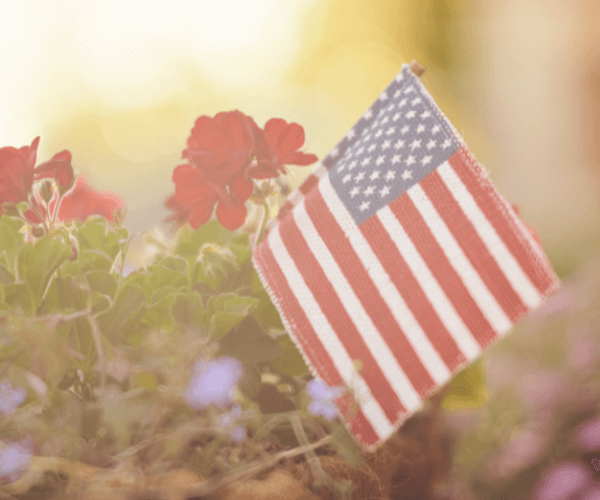Embarking on an exploration of the annals of medical history, we uncover narratives rich in suffering, resilience, and unwavering perseverance. Among these intricate tales lies the saga of migraine, a neurological affliction that has cast its shadow over humanity for centuries. However, within the tapestry of this narrative, a distinct thread emerges—one that intertwines intimately with the experiences of women throughout the ages. As we honor Women’s History Month, it is imperative to delve into the unique journey of women in their relentless battle against this debilitating condition.
Ancient Notions and Early Understandings about Migraine
The origins of migraine trace back to the mists of antiquity, where glimpses of its presence are found within the texts of ancient civilizations like Mesopotamia, Egypt, and Greece. In these early chronicles, migraine often lurked in the realm of the supernatural, attributed to celestial whims or divine retribution. The ancient Greeks, for instance, wove tales of migraine stemming from imbalances in bodily humors (fluids), while Egyptian papyri prescribed enigmatic treatments infused with incantations and herbal lore.
From Hysteria to Hormones: Migraine in the Middle Ages and Renaissance
Throughout the tumultuous Middle Ages and the Renaissance, migraine persisted as an enigmatic specter, entwined with prevailing beliefs surrounding women’s physiology and mental well-being. It was an era influenced by the notion of “hysteria” suggesting that women’s erratic behaviors and physical maladies were manifestations of a wandering womb. Migraine, with its constellation of symptoms including nausea and heightened sensitivity to stimuli, only served to bolster these entrenched beliefs.
The Renaissance introduced an age of enlightenment, yet migraine remained veiled in mystery. Despite growing advancements in medical knowledge, treatments for migraine ranged from the crude—such as bloodletting—to the herbal, with outcomes often disappointingly meager. It wasn’t until the 17th century that the term “migraine” itself began to gain traction, borrowed from the Greek “hemicrania,” denoting pain localized to one side of the head.
The Victorian Struggle of Women with Migraine Headaches
The Victorian era was characterized by its strict societal norms and rigid gender roles, which often imposed significant challenges on women’s lives. Amidst the backdrop of corsets, tea parties, and social hierarchies, there existed a silent yet pervasive struggle endured by many Victorian women – migraine headaches. While migraines are difficult to manage in any era, the constraints of Victorian society amplified the burden for women, rendering even mundane tasks a formidable ordeal.
Household Duties: In an era where domesticity was considered the cornerstone of womanhood, the relentless demands of household chores posed a formidable challenge for women suffering from migraine headaches. From scrubbing floors to cooking meals over open flames, the physical exertion required to maintain a Victorian household was immense. For women plagued by throbbing head pain, the mere thought of engaging in such tasks would have been a daunting prospect.
Social Expectations: Victorian society placed great emphasis on propriety and decorum, particularly within the sphere of social gatherings. Women were expected to fulfill the role of gracious hostesses, attending tea parties, balls, and other social events with impeccable composure. However, for those grappling with the debilitating effects of migraine headaches, the prospect of socializing in crowded, noisy environments would have been overwhelming. The bright lights, chatter, and perfumes permeating such gatherings could easily trigger or exacerbate migraine symptoms, leaving women feeling isolated and misunderstood.
Educational Pursuits: Access to education for women in the Victorian era was limited, yet for those fortunate enough to pursue scholarly endeavors, migraine headaches presented a formidable obstacle. The rigorous academic demands placed upon students, coupled with the expectation of intellectual engagement, would have posed a significant challenge for women grappling with the cognitive impairments often associated with migraines. Reading, writing, and attending lectures while battling nausea, photophobia, and throbbing head pain would have required a Herculean effort.
Employment Opportunities: While some Victorian women sought employment outside the home, their options were often limited to roles deemed suitable for the “weaker sex.” Occupations such as domestic service, teaching, or factory work offered little respite for those suffering from migraine headaches. The physically demanding nature of many jobs, coupled with the expectation of unwavering productivity, would have rendered employment a daunting prospect for women struggling to cope with chronic pain.
Medical Treatment: In an era where medical knowledge was rudimentary and treatments often ineffective, seeking relief from migraine headaches posed a formidable challenge for Victorian women. Remedies ranged from herbal concoctions to dubious elixirs, with little scientific basis or understanding of the underlying pathology. The stigma surrounding mental health and women’s bodily ailments further compounded the issue, leaving many sufferers to endure their pain in silence, without access to adequate medical care or understanding.
Social Stigma: Perhaps one of the most insidious aspects of living with migraine headaches in the Victorian era was the pervasive social stigma attached to invisible illnesses. Women who sought respite from their symptoms were often dismissed as hysterical or emotionally unstable, their suffering trivialized or outright ignored. The lack of empathy and understanding surrounding migraine headaches perpetuated a culture of silence and shame, leaving many women to suffer in isolation, without the support or validation they so desperately needed.
Enlightenment and Modern Medicine: Scientific Progress and Gendered Experiences
The dawn of the Enlightenment era witnessed remarkable strides in scientific inquiry, including the nascent exploration of migraine. Pioneering physicians like Thomas Willis contributed seminal insights to the classification and elucidation of the condition. However, entrenched societal attitudes toward women’s health continued to cast a long shadow over medical discourse.
As the 19th century unfolded into the early 20th century, migraine gradually gained recognition as a bona fide medical disorder. Yet, gender bias persisted, coloring both the diagnosis and treatment of the condition. Women’s experiences of migraine were often dismissed or pathologized, attributed to notions of “female weakness” or emotional instability. This period offered a ray of hope as we saw the introduction of medications such as ergotamine (a vasoconstrictor) emerge to prevent and alleviate migraine symptoms. Hormonal factors in migraine occurrence, such as menstrual migraine was also becoming recognized at this time.
Advancements and Advocacy in the Modern Era
The latter half of the 20th century ushered in an era of unprecedented progress in migraine research and therapeutics. Insights into the neurobiological underpinnings of migraine paved the way for many acute and preventive therapies as well as lifestyle and nutritional interventions. At the same time, the voices of women began to reverberate ever louder in the corridors of migraine advocacy and awareness. Advocacy organizations and grassroots initiatives spearheaded by patients played a pivotal role in dismantling stigma, fostering solidarity within the community, and galvanizing research endeavors.
Takeaway: Throughout history women faced formidable challenges grappling with migraine headaches, and exacerbating the physical, emotional, and social burdens imposed by this debilitating condition. Societal constraints compounded the already arduous task of managing chronic pain. As we reflect on this historical era, it serves as a poignant reminder of the resilience and fortitude exhibited by women in the face of adversity, and the pressing need for greater empathy, understanding, and support for those living with invisible illnesses.
About AKESO
AKESO formulates world class dietary supplements that provide nutritional support for the most common health issues that concern people most, such as migraines, headaches, joint health, stress & anxiety, memory, sleeplessness, ADHD, and more. Changing lives is the reasons we wake up every day passionate about the special products we provide to our customers. Helping you to get well and stay well is our bottom line.


